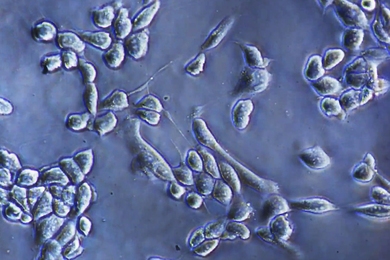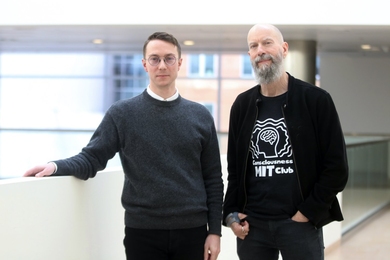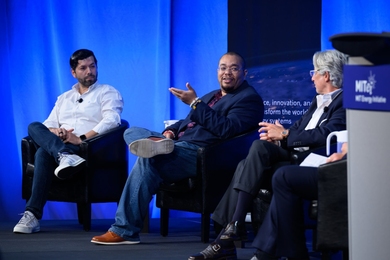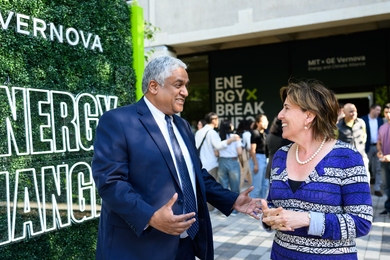The decision of pharmaceutical giant Novartis to move its research leadership into Technology Square in Cambridge, Mass., is confirmation of the status of this small city of 101,000 as a world magnet for biotechnology and pharmaceutical companies. The heart of the biotech/pharmaceutical area is the circle of development around the Massachusetts Institute of Technology. Up the Charles River is Harvard University; across the river are Boston's famed hospitals.
Of the top 25 biotechnology research and development firms in Massachusetts, 14 are in Cambridge, according to the 2002 Boston Business Journal Book of Lists.
Thirteen of those firms have bought or leased space within a mile of MIT and affiliated institutions, such as the Whitehead Institute and the MIT-Whitehead Human Genome Center. Those 13 firms account for two-thirds--or $1.175 billion--of R&D spending by the top 25 biotechnology firms.
Altogether, Cambridge has 60 biotech/pharmaceutical companies that are members of The Massachusetts Biotechnology Council.
52 of these cutting-edge Cambridge firms have settled within a mile of MIT--36 firms near Central Square, 13 in the Kendall Square area and two in East Cambridge.
At least 21 of the 60 Cambridge firms have licensed technology from MIT or were founded by MIT alumni or faculty. These firms include Biogen, Millennium Pharmaceuticals, Ariad Pharmaceuticals, Genzyme, Alkermes and Biopure, all of which were included in the Boston Business Journal's top 25 R&D biotech firms list.
MIT AND TECHNOLOGY SQUARE
Technology Square, the future home of the Novartis Institute for Biomedical Research, played a key role in Cambridge's high-tech development. In the 1960s, MIT and the real estate firm Cabot Cabot and Forbes responded to the request of Mayor Edward A. Crane and used private money to convert a former soap factory into Technology Square, one of Cambridge's first large-scale commercial real estate developments. MIT sold its interest in 1973 and repurchased it in 2001. It is again part of MIT's investment portfolio.
NATIONAL IMPACT OF MIT ENTREPRENEURS
Nationally, MIT has been important in generating entrepreneurial scientists, engineers and managers who have founded biotech companies. A 1996 MIT study of the biotech industry (/newsoffice/nr/1996/41667.html) found that nine of the 10 best-selling biotech drugs in 1994 were developed by companies that were founded or co-founded by MIT alumni or faculty. The drugs developed by Amgen, Biogen and Genentech treat heart attacks, cancer, leukemia, viruses, infections from chemotherapy, infectious diseases, AZT treatment of AIDS, anemia, diabetes, hepatitis, growth hormone deficiency, Kaposi's sarcoma and other diseases.
FACT SHEET: RECENT MIT BIOTECH RESEARCH
Smart Sutures
A smart suture that ties itself into the perfect knot kicks off the first of many potential medical applications for new biodegradable plastics with "shape memory" developed at MIT by Robert Langer, the Germeshausen Professor of Chemical and Biomedical Engineering, and Andreas Lendlein, a former MIT visiting scientist from the University of Technology in Aachen, Germany.
Pharmacy on a Chip
A dime-sized "pharmacy on a chip" that could be swallowed or implanted under the skin and programmed to deliver precise amounts of drugs at specific times was designed in MIT's Microsystems Technology Laboratory by Robert Langer, the Germeshausen Professor of Chemical and Biomedical Engineering, and graduate student John Santini.
NanoSoap
A new designer nanomaterial created by MIT researchers that acts like the main ingredient in soaps, shampoos and detergents. This biological substance may lead to novel carriers for dispensing drugs in the body, according to inventors Professor Shuguang Zhang, associate director of MIT's Center for Biomedical Engineering, and postdoctoral associate Sylvain Vauthey and biology graduate student Steve Santoso of the Center for Biomedical Engineering.
Engineered Blood Vessels
MIT researchers and colleagues have found a potentially unlimited source of human cells that could in turn be used to grow engineered blood vessels for the treatment of heart disease and related problems. It is a first step toward using embryonic stem cells as a source of endothelial cells for tissue engineering, according to Shulamit Levenberg, a postdoctoral associate in the Department of Chemical Engineering.
New Controls on Cancer Cells
In late 2001, MIT scientists wielding molecular scissors showed for the first time that the sugar jackets of cancer cells can be tailored to inhibit tumors. Associate Professor Ram Sasisekharan of the Biological Engineering Division led the MIT team.
Talking to DNA
MIT researchers reported last year that they can "speak" to DNA biomolecules with radio waves. The goal is to instruct biological materials how to act for a variety of purposes, including computational operations, according to Joseph M. Jacobson, associate professor in the Program on Media Arts and Sciences at the Media Lab, and Shuguang Zhang, associate director of MIT's Center for Biomedical Engineering.





